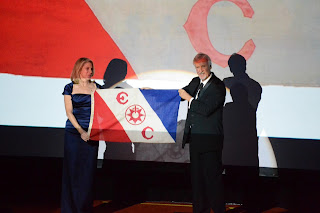A musical TARDIS - the Dr. Who Fan Orchestra brings fans together in one musical collaboration after another!
The Internet has made it easy for people across the globe to communicate, but it's the people themselves who come up with the ideas and make the connections.Enter Stephen Willis, a young composer from the UK who describes himself on Twitter as "Aspiring director & composer. Trainee teacher of Speech and Drama. Doctor Who fan. Founder of the Doctor Who Fan Orchestra."
Visting Stephen's website, you get a flavor for his talent and composition skills. Just a couple of years ago, he decided to share these abilities with the world in a unique way. As a fan of Dr. Who, Stephen was inspired by the music written for the T.V. series by Murray Gold. Combining the concepts of the YouTube Symphony and Eric Whitacre's virtual choir, Stephen came up with an idea:
"One gloomy evening in early 2011, in Surrey, England, I was tinkering away in Sibelius on an arrangement of “I Am The Doctor”, the Eleventh Doctor’s theme, when a particularly crazy idea struck me. I knew that Murray’s music meant an awful lot to an awful lot of people, and I reasoned that, probably, among those fans, a lot would be musicians themselves. And that they’d give anything to be able to play music from Doctor Who. Wouldn’t it be great, I thought, if we could somehow play the music all together."
Communicating through social media, Stephen's brought together musically-inclined Dr. Who fans from around the world, working closely with assistants Robin LaPasha and Heather Ackroyd. The geographically diverse crew communicates with musicians via Facebook and email, distributing scores and recordings that the players and singers use to practice and perform, and providing a forum for them to communicate with one another throughout the process. Recordings include a tuning note and a "click track" that help ensure the group stays in tune and together, in the absence of each other's company, and that of a conductor.
The results are amazing, oftentimes moving. The seventh DWFO collaboration, "Amy's Suite" appears below. It was released last week, after hours of intense work by Stephen and crew, piecing together 400 audio recordings of voices and instruments along with 290 video files of the performers in action. (When you watch, you might catch me playing the flute and piccolo. I'm the one wearing hot pink headphones :).
The performers come from all types of musical backgrounds ranging from school-aged students through senior citizens. Some get together to practice in groups at localized MeetUps, and many dress as chraracters from the show for their recording sessions, adding fun and whimsy for our viewers.
This was only my second time playing in the DWFO, but I plan to keep on doing it! I really enjoy the music and getting to know the other participants from around the world, and the final product is always a remarkable surprise.
Many thanks to Stephen and crew for your dedication and tireless hours to produce a wonderful performance every time!!
Note: If you're interested in signing up for the DWFO, follow the official Facebook page for information.




